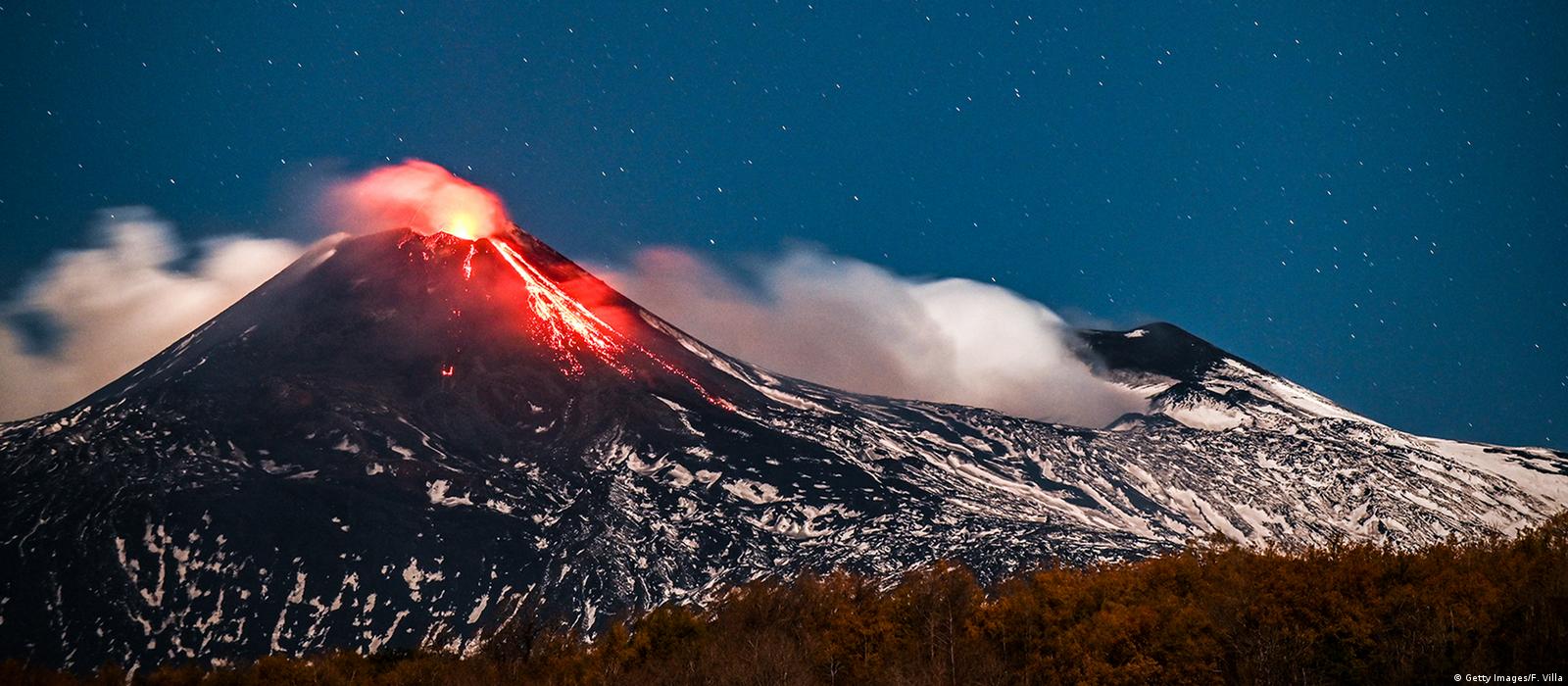
Active volcanoes are awe-inspiring natural wonders that have captivated humans for centuries. These fiery mountains are not only breathtaking to witness but also play a significant role in shaping the landscape and impacting the planet’s climate. From their fiery eruptions to the creation of new landforms, active volcanoes are a constant reminder of the Earth’s dynamic nature.
In this article, we will explore 13 astonishing facts about active volcanoes that will give you a deeper understanding of their power and significance. From the tallest to the most active, we will delve into the world of volcanic activity and uncover some mind-blowing information about these geological marvels. So fasten your seatbelts and get ready for an exciting journey into the fiery depths of the Earth!
Key Takeaways:
- Active volcanoes are powerful and unpredictable, with around 1,500 worldwide. They shape the Earth’s geography and can create new land, but also pose risks to aviation and trigger tsunamis.
- Volcanic eruptions reach extreme temperatures, emit gases affecting climate, and create stunning natural phenomena. Despite their dangers, they showcase the Earth’s beauty and energy, captivating our imagination.
Active volcanoes are constantly erupting
Active volcanoes are characterized by their frequent eruptions, spewing out lava, ash, and gases from the Earth’s mantle. These eruptions can range from small explosions to massive cataclysmic events. The continuous eruption activity makes active volcanoes a constant source of awe and fascination.
There are around 1,500 active volcanoes worldwide
Across the globe, there are approximately 1,500 active volcanoes, scattered across different continents and even underwater. These volcanoes are a testament to the dynamic nature of our planet and the powerful forces that shape it.
The majority of active volcanoes are located in the Pacific Ring of Fire
The Pacific Ring of Fire, also known as the Circum-Pacific Belt, is a region that spans the Pacific Ocean and is home to about 75% of the world’s active volcanoes. This area is highly susceptible to earthquakes and volcanic activity due to the movement of tectonic plates.
Volcanic eruptions can reach temperatures of over 1,000 degrees Celsius
During a volcanic eruption, molten lava can reach incredibly high temperatures, often exceeding 1,000 degrees Celsius. This extreme heat can cause devastation to the surrounding area, melting everything in its path and altering the landscape.
Active volcanoes contribute to the formation of new land
Volcanic eruptions can create new land formations such as islands or expand existing landmasses. Over time, layers of solidified lava and volcanic debris can accumulate and form new land areas, adding to the Earth’s ever-changing geography.
The largest volcano in the solar system is on Mars
Olympus Mons, located on the planet Mars, is not only the largest volcano on Mars but also the largest known volcano in the entire solar system. Its gigantic size and remarkable geological features make it a subject of great interest for scientists studying Mars.
Volcanic ash can travel long distances
When a volcano erupts, it releases a significant amount of ash into the atmosphere. This ash can be carried by wind currents and travel thousands of miles away from its source. Volcanic ash can have both positive and negative effects on the environment and human health.
Some active volcanoes are underwater
Not all active volcanoes are visible on land; some are submerged beneath the ocean’s surface. These underwater volcanoes, known as submarine volcanoes, can still have significant impacts, such as the creation of seamounts and the release of volcanic gases into the water.
Active volcanoes can trigger tsunamis
Underwater volcanic eruptions have the potential to trigger tsunamis. The rapid displacement of water caused by the violent eruption can create massive waves that can travel across the ocean, resulting in tsunamis that can wreak havoc along coastal areas.
Volcanoes can emit gases that affect the Earth’s climate
Volcanic eruptions release large quantities of gases into the atmosphere, including sulfur dioxide and carbon dioxide. These gases can have a significant impact on the Earth’s climate by affecting the temperature and composition of the atmosphere.
Active volcanoes are closely monitored for potential eruptions
Due to their unpredictable nature, active volcanoes are closely monitored by scientists and geologists. Various monitoring techniques, such as seismic activity measurements, gas emissions analysis, and ground deformation monitoring, are used to assess volcanic activity and provide early warnings.
Volcanic ash can pose risks to aviation
Volcanic ash can be highly detrimental to aircraft engines, posing a significant risk to aviation. The tiny particles can cause engine failure or damage, leading to potentially life-threatening situations. As a result, air travel is often disrupted near active volcanoes during eruptions.
Volcanic eruptions can create spectacular natural phenomena
Despite the dangers they pose, volcanic eruptions can also create breathtaking natural phenomena. From lava flows and volcanic lightning to volcanic bombs and pyroclastic flows, these displays of nature’s power captivate our imagination and remind us of the Earth’s remarkable beauty and energy.
Conclusion
In conclusion, active volcanoes are truly fascinating and hold a wealth of astonishing facts. From their incredible power to the unique ecosystems they create, these natural wonders continue to captivate scientists and explorers alike. As we have discovered, active volcanoes are more than just sources of destruction; they are essential for the creation of new land, provide valuable insights into Earth’s history, and even have potential benefits for geothermal energy.Understanding the characteristics and behavior of active volcanoes is crucial for predicting eruptions and ensuring the safety of communities living in their vicinity. With ongoing research and technological advancements, we can continue to learn more about these awe-inspiring geological phenomena and work towards mitigating their potential hazards.So, the next time you come across news about an active volcano, remember these astonishing facts and appreciate the unique role they play on our ever-changing planet.
FAQs
1. What is an active volcano?
An active volcano is a volcano that has erupted in recorded history or is showing signs of anticipated eruption in the near future.
2. How many active volcanoes are there in the world?
There are approximately 1,500 active volcanoes around the world, with a significant number clustered along the Pacific Ring of Fire.
3. What causes volcanic eruptions?
Volcanic eruptions are caused by the movement of tectonic plates, which releases pressure and allows molten rock (magma) to reach the Earth’s surface.
4. Are active volcanoes dangerous?
Active volcanoes can be dangerous as they have the potential to cause widespread destruction and loss of life during a volcanic eruption. However, with proper monitoring and preparedness measures, the risks can be minimized.
5. Can volcanic eruptions be predicted?
While predicting volcanic eruptions with absolute certainty is challenging, scientists use various monitoring techniques such as seismic activity, gas emissions, and ground deformation to make informed predictions about potential eruptions.
6. Can active volcanoes be beneficial?
Absolutely! Active volcanoes provide benefits such as nutrient-rich soil for agriculture, geothermal energy for power generation, and they contribute to the formation of new landmasses.
7. Are volcanic eruptions common?
Volcanic eruptions occur regularly around the world, but their frequency varies depending on the specific volcanic region and geological conditions.
Volcanoes never cease to amaze, and if you're curious about more geological wonders, consider exploring the mighty Mauna Loa, nestled in the Hawaiian Islands. For a glimpse into history, Mount Vesuvius offers intriguing facts that shed light on its infamous eruption. Alternatively, Kilauea Volcano beckons with its mesmerizing lava flows and unique characteristics that set it apart from other volcanoes.
Was this page helpful?
Our commitment to delivering trustworthy and engaging content is at the heart of what we do. Each fact on our site is contributed by real users like you, bringing a wealth of diverse insights and information. To ensure the highest standards of accuracy and reliability, our dedicated editors meticulously review each submission. This process guarantees that the facts we share are not only fascinating but also credible. Trust in our commitment to quality and authenticity as you explore and learn with us.


